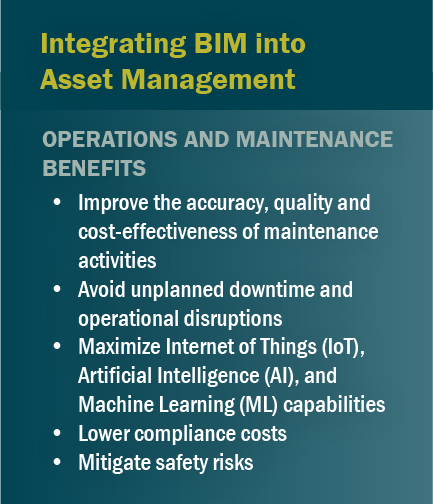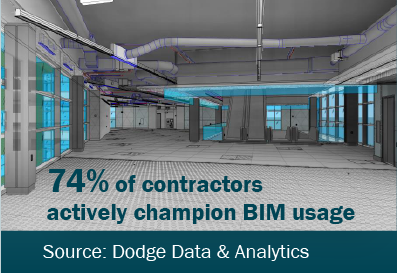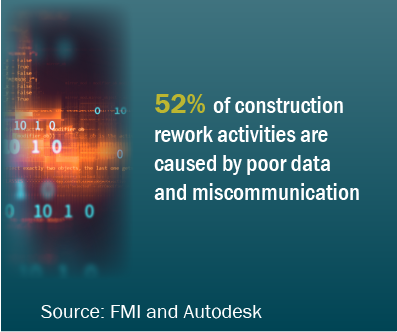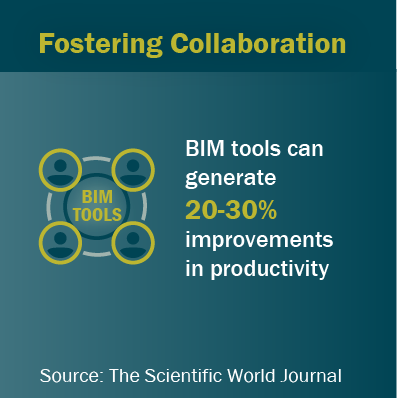Better Asset Management through Building Information Modeling (BIM)
Building information modeling (BIM) tools are transforming how major infrastructure projects are designed, constructed and maintained.
With the aid of BIM software, designers can translate engineering design onto drawings. Contractors can more readily procure and construct the design. Once the project is complete, owners receive a detailed asset database.
BIM is capable of generating walk-through visualizations of a building’s infrastructure or a 360-degree view of a large asset, allowing clients and owners to see the asset in place well before construction. Perhaps, more importantly, BIM can create a “living model” that facilitates asset management throughout the infrastructure system’s lifecycle.
When BIM is used effectively, it can be a powerful asset management tool for procurement, construction, operation and maintenance. Forward-looking owners who maximize BIM functions can seamlessly transfer knowledge among staff and contractors, avoid costs associated with asset assessments and repairs, and expedite procurement of assets nearing life cycle completion.
Modeling Tools Enhance Collaboration, Quality, Intelligence
More than a single software application, BIM is a combination of tools that create a rich database for asset management for any infrastructure. BIM models vary in dimensions depending on its use. Here’s a breakdown of what’s involved with each added dimension:
- 3rd Dimension: computer-aided design (CAD) enhances the precision and accuracy of renderings
- 4th Dimension: facilitates construction management with details on construction planning, scheduling and sequencing
- 5th Dimension: enables budgetary decisions with details on material costs and construction estimates
- 6th Dimension: supports high-performance designs by, for example, incorporating energy models, lighting simulations, energy consumption analyses, and compliance tracking
Project leaders who incorporate these details into BIM tools improve the quality, constructability, and cost-effectiveness of delivered infrastructure. Open-data standards can enable interoperability among BIM users, facilitating closer collaboration among engineers, architects, contractors, and owners. 6D modeling can help to ensure owners fulfill requirements of sustainability standards and achieve progress on their environmental initiatives.
Architectural and engineering firms can make the most of their BIM models with immersive design tours. Virtual reality technologies enable in-depth visualizations of the integrated design environment, clarifying how each dimension will ultimately be implemented or constructed once the project is complete.
BIM + Asset Management = “Living Model”
A seventh dimension leverages BIM as an asset management tool.
7D BIM incorporates operations and maintenance details to create a comprehensive “living model.” The model integrates information from as-built designs with details on every modification performed over the infrastructure’s lifetime. Inputs include adding cut sheets and equipment manuals, parts replacement schedules, or instructions for preventative maintenance.
7D BIM provides preventative maintenance activities. For example, the model can guide facility teams on the location and materials necessary to replace aging equipment. Intelligent maintenance plans avoid the cost of repairs and can potentially prevent operational disruption.
7D models integrate data from a building management system (BMS) to potentially identify flaws in the system’s installation or operation. With the assistance of machine learning software, third-party tools can extract insights from a BIM database to predict how to enhance equipment operations.

Use cases for 7D BIM include:
- Scheduling asset maintenance and replacement
- Accurately forecasting operating expenses
- Developing budgets for future capital projects
- Applying Internet of Things (IoT) to enhance facility performance
- Managing hazards and disaster recovery

Minimizing the Costs of Uncertainty
Once assets become operational, critical asset-related information often gets lost, mainly due to misplaced as-built drawings, information not documented adequately, or departures among the owner’s key staff. These are common problems across industries and — as a result— among the top factors driving up costs for rehabilitation or State of Good Repair for major capital projects.
Asset inventories and infrastructure assessments are time consuming. Surveys must document asset locations, function, and state of repair. Assets located “behind the wall” may not be known until after construction begins, driving increases in contractors’ contingency budgets.
If owners were to leverage 7D BIM as an asset management tool, a facility’s infrastructure would no longer be a mystery. Readily available information on the asset’s location, type, purpose, and life cycle would make infrastructure assessment surveys redundant and would minimize costs associated with “unknown knowns” or “unknown unknowns.”
When BIM is used for asset management, it can serve as a powerful capital planning tool. The living model informs design consultants of the interconnected asset, its maintenance history, and performance record. Applying that knowledge improves the quality and constructability of future renovations, facilitates project coordination, and lowers project risks.

Committing to Innovation
As owners look for cost-effective strategies to maintain and improve infrastructure assets, more are taking a longer-term view by integrating BIM into their asset management systems.
Progressive owners are going as far as using real-time and historical data to represent their assets’ past and present and to simulate how the assets will exist in a predicted future. 7D BIM can be combined with artificial intelligence and machine learning capabilities, assisting facility owners with proactive troubleshooting and preventative maintenance.
Such detailed models require that owners create and maintain complex databases for every asset in their infrastructure. This takes time and expertise. Engineering consultants who are familiar with the asset’s original designs are well suited to handle the responsibility of transforming 3D BIM models to become 7D BIM models by collaborating closely with contractors, vendors, and owners.
Often times, a new model is created at each phase of a project. This can create redundancy and confusion, while increasing the risk of errors. Instead, owners can turn to an Integrated Design Manager to promote collaboration. The role ensures that designers, contractors and the owner follow best practice, building off the original designs and working off the same model. The most collaborative arrangement places the Integrated Design Manager directly within the contractor’s team.
Please be in touch to discuss how a “living model” can enhance your infrastructure assets and push the boundaries of BIM’s expanding potential. With each generational improvement in BIM software, Burns continues to find innovative new approaches to realize its potential during design and construction as well as throughout an asset’s operational lifetime.



